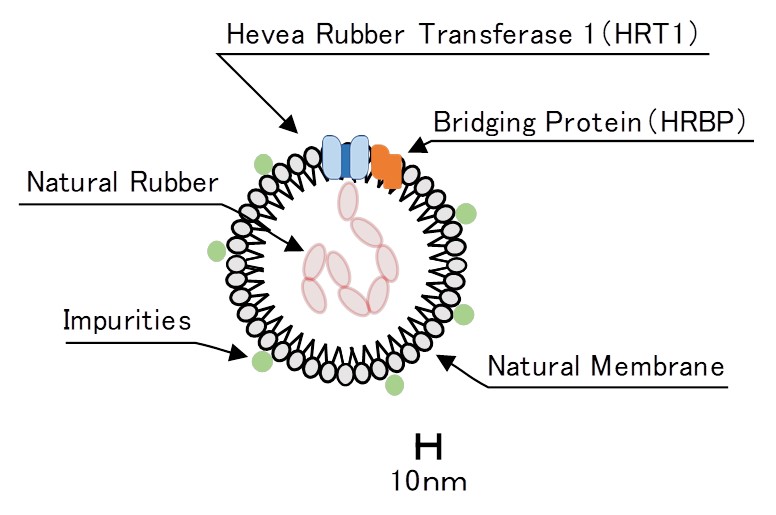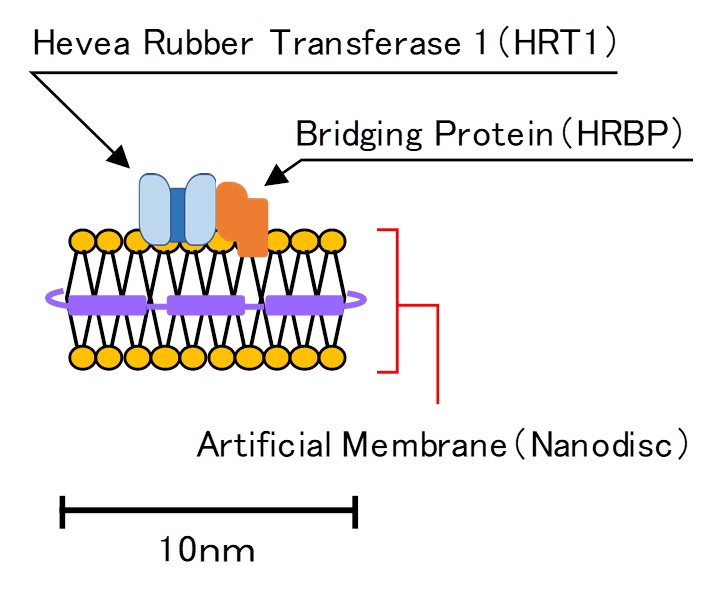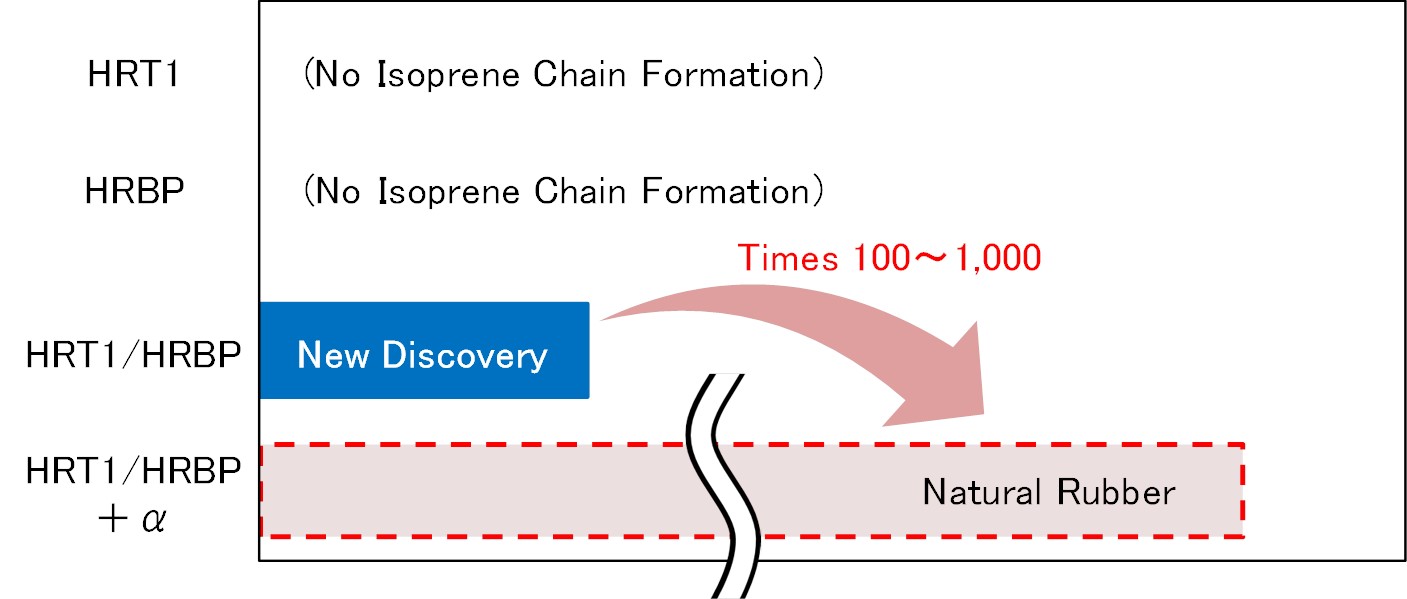Sumitomo Rubber Invents Enzyme Evaluation Technique to Shed New Light on Mechanisms Behind Natural Rubber Biosynthesis ~ Joint Research with Saitama University, Tohoku University & Kanazawa University ~
Apr. 14. 2022
Sumitomo Rubber Industries, Ltd. is pleased to announce that, through ongoing joint research with Professor Yuzuru Tozawa of Saitama University, Associate Professor Seiji Takahashi of Tohoku University and Associate Professor Satoshi Yamashita of Kanazawa University, we have invented a new technique for evaluating enzymes using artificial membranes (nanodiscs) in order to shed further light on the mechanisms behind the biosynthesis of natural rubber. While previous evaluation techniques used natural membranes, this new technique uses artificial membranes, thereby eliminating environmental impurities to allow for higher precision evaluations. Using this groundbreaking technique to discover new significant constituents of natural rubber will surely lead to the improvement of rubber yields and many other advancements, potentially even opening the door to laboratory biosynthesis of natural rubber.
| Previous Technique (Announced in 2016) | Newly Invented Technique |
 |
 |
We have long known that three specific proteins play an important role in natural rubber biosynthesis (i.e. the synthesis of long polyisoprene chains) in Pará rubber trees: “Hevea Rubber Transferase 1 (HRT1),” “HRT1-REF Bridging Protein (HRBP)*1” and “Rubber Elongation Factor (REF)*2.” However, it was not clear under what conditions HRT1 (an enzyme believed to bind multiple molecules together) fulfilled its particular function. In the past, HRT1 has been observed synthesizing isoprene chains when placed on natural membranes, such as those formed by rubber particles or yeast, etc. However, the use of natural membranes presented an issue in that impurities in the membranes will inevitably contaminate the test environment, making it impossible to identify the other constituents necessary for isoprene chain synthesis.
And so, we developed a new enzyme evaluation technique that uses artificial membranes (nanodiscs) that contain no natural materials. Thanks to this breakthrough, we have now discovered that HRT1 synthesizes isoprene chains when both HRT1 and HRBP are present on one of these artificial membranes. This was the first time that HRT1 has been observed performing this function on an artificial membrane.
| Length of Isoprene Chains on Artificial Membrane (Image) | |
 |
The next step will be to find the significant component (+α) that causes isoprene chains to lengthen, which would make it possible to artificially biosynthesize natural rubber in a laboratory. |
We are also pleased to announce that the results of our research have been published in “Scientific Reports,” which is a leading international journal in the field of life sciences.
<Scientific Reports Official URL>
https://www.nature.com/articles/s41598-022-07564-y
※1. HRBP is a protein that is believed to facilitate molecular binding between HRT1 and membrane particles that serve as a nexus for the accumulation of natural rubber.
※2. REF is a protein that is believed to play a role in membrane particle stability.
<Reference>
■Saitama University Press Release
■Previous News Release (Issued on October 26, 2016)

